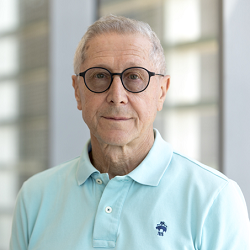DATE/TIME: Friday, November 1, 2024, 2:30 pm
Georgiy Stenchikov
Earth Science and Engineering, KAUST
Modeling the Direct Radiative Forcing and Climate Impacts of the 2022 Hunga Volcano Explosion
The shallow-underwater eruption of Hunga on January 15, 2022, was very unusual. The volcanic materials reached the lower mesosphere at an altitude of 58 km. The injected SO2 mass from this eruption was small compared to significant climate-influencing eruptions such as the 1991 Pinatubo eruption. However, a large water vapor (WV) injection was suspected to have the potential to cause massive changes in stratospheric chemistry and dynamics and even force near-surface warming. Such eruptions are extremely rare and have not previously been detected. We modeled the radiative forcing (RF) of sulfate aerosols and WV clouds generated by the explosive eruption of the Hunga volcano using the WRF-Chem meteorology–chemistry model. We injected 150 Mt of WV and 0.45 Mt of SO2 at a height of 35 km. The resulting volcanic WV layer was cooled through thermal radiation and descended to 27 km in two weeks. The WV mixing ratio within the plume exceeded 30 ppmv after the eruption, gradually reducing. Within three weeks, SO2 had been converted to SO4 with a 1.0 µm global stratospheric aerosol optical depth (SAOD) of 0.0025. To fit the observed SAOD, the SO2 mass should be scaled to 0.73–1.46 Mt. The six-month-average global mean net instantaneous RF (IRF) of volcanic sulfate aerosols (SAs) at the top of the atmosphere (TOA) reaches −0.381 W/m2 for 1.46 Mt SO2 emission. The negative WV net IRF at the TOA is at least one order of magnitude smaller than that from SAs. The WV IRF at the bottom of the atmosphere is negligibly small and cannot cause discernable long-term effects on climate. Broadband WV calculations overestimate IRF by 30% relative to line-by-line calculations. Cooling in the lower stratosphere within the WV plume exceeds −1 K, and the WV adjusted (to stratospheric temperature) RF is positive at the TOA and the tropopause but overwhelmed by negative SA forcing. The patchy tropospheric temperature response does not show systematic changes.
Seminar Host:
Alan Robock
Atmospheric Science Group - Department of Environmental Sciences, SEBS, Rutgers University



